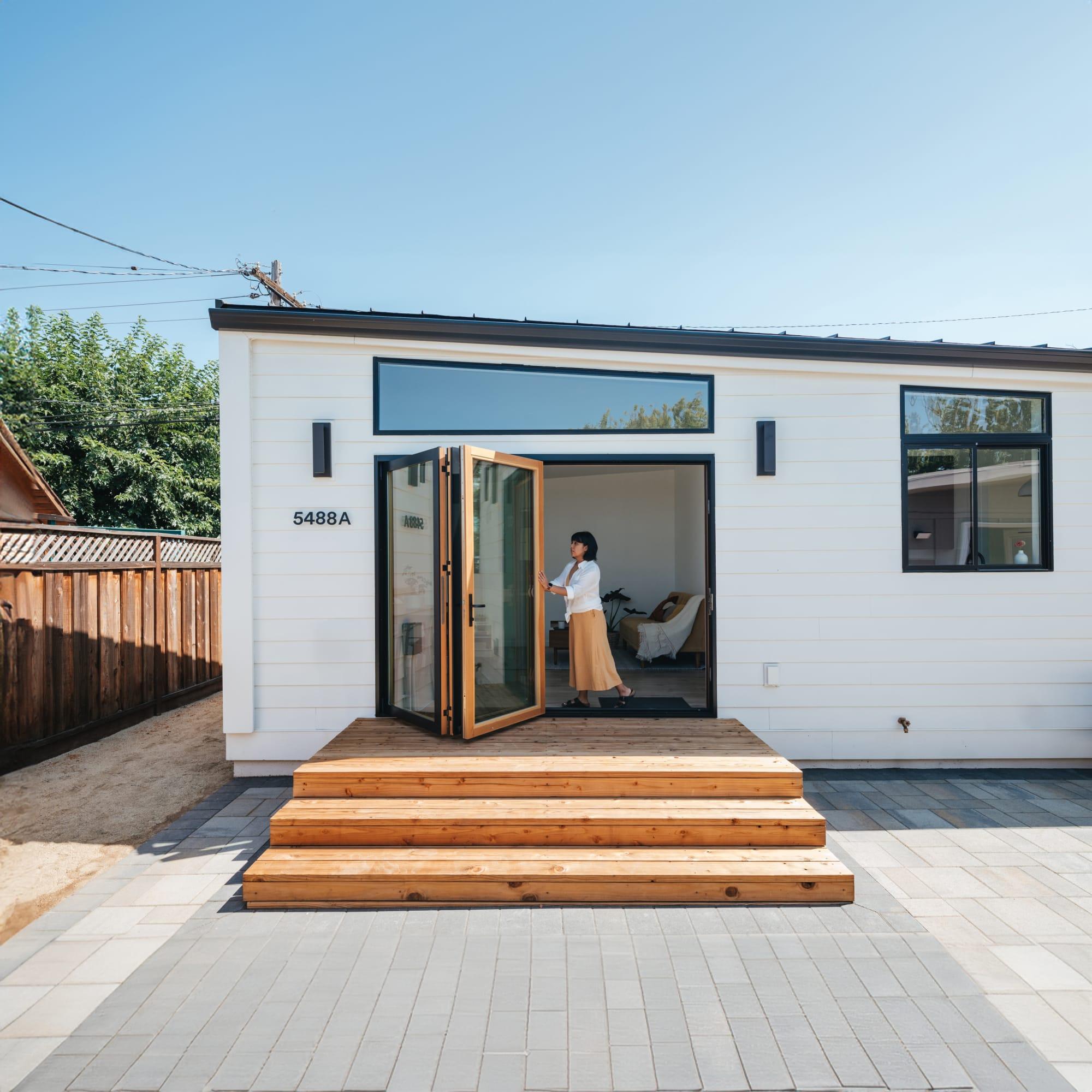 Abodu ADU in California. Image courtesy of Abodu Share Share
Abodu ADU in California. Image courtesy of Abodu Share Share
Post
or
https://www.archdaily.com/1017744/lessons-from-los-angeles-the-united-states-path-to-regulating-accessory-dwelling-units
U.S. cities are embracing accessory dwelling units (ADUs) to address the national housing crisis. Often built on the site of an existing single-family home, ADUs offer an affordable option to increase housing supply in existing neighborhoods. However, as with any new housing development, effective regulations are essential for widespread adoption. Los Angeles has emerged as a testing ground for using ADUs to address housing shortages, providing valuable insights for other cities. The city’s experience highlights the challenges of establishing regulations while also promoting the benefits of ADUs as an affordable housing solution.




 + 3
+ 3
In 2017, a California law aimed at deregulating accessory dwelling units (ADUs), such as basements, garage apartments, and back houses, went into effect. The impact in Los Angeles was dramatic: within two years, building permits for ADUs increased by 30%, accounting for one-fifth of new housing permits issued. In contrast, the impact was much smaller in other states’ big cities, such as Seattle, where ADUs accounted for just 2% of new housing permits over the same period.
 Birdhouse / North Arrow Studios. Image © Chase Daniel
Birdhouse / North Arrow Studios. Image © Chase Daniel Crest Guesthouse / Mork Urnes Architects. Image © Bruce Damonte
Crest Guesthouse / Mork Urnes Architects. Image © Bruce Damonte
Nationwide, adoption of ADUs has been slow, but Los Angeles’ success shows the city has implemented effective policies — and its experience provides a valuable blueprint for other cities struggling with housing shortages.
Related article
ADUs alone aren’t enough for California
Streamlining of permit procedures
 Coto and Abodu designed a prefab ADU for the San Francisco Bay Area. Image © Joe Fletcher
Coto and Abodu designed a prefab ADU for the San Francisco Bay Area. Image © Joe Fletcher
One of the initial obstacles Los Angeles faced was the cumbersome and expensive permitting process for building ADUs. Recognizing this barrier, the city streamlined the approval process, reduced fees, and removed certain zoning restrictions. By simplifying the permitting requirements, Los Angeles made ADUs more accessible to a wider range of homeowners and encouraged participation in the program.
Addressing neighborhood concerns
 Studio 804 designed an ADU in Kansas. Image © Corey Gaffer Photography
Studio 804 designed an ADU in Kansas. Image © Corey Gaffer Photography
As ADUs became more prevalent in Los Angeles neighborhoods, concerns arose about parking, privacy, and potential impacts to neighborhood character. To address these issues, the city implemented guidelines and standards to ensure ADUs fit into the existing aesthetic and scale of their surroundings. These guidelines covered size limits, setback requirements, and style.
Regulation of short-term rentals
 An ADU designed by Assembledge+, Los Angeles. Image © Yoshi Makino
An ADU designed by Assembledge+, Los Angeles. Image © Yoshi Makino
In Los Angeles, there is great concern that ADUs could be converted into short-term rentals, further straining an already tight housing market. The city has responded to this issue by implementing a home-sharing ordinance that regulates short-term rentals in ADUs. The ordinance aims to strike a balance between ensuring ADUs remain a source of long-term affordable housing while still providing rental income to homeowners.
Promoting Affordability
 Cosmic Studios. Image courtesy of Cosmic Buildings
Cosmic Studios. Image courtesy of Cosmic Buildings
Los Angeles recognizes the potential impact ADUs have on housing affordability and is taking steps to encourage the creation of accessible housing options. The Backyard Homes Project offers a comprehensive package to homeowners looking to rent out their ADUs to very low-income residents through Section 8 housing, including project management, affordable design and construction, and even landlord training to make the process more manageable. The LA ADU Accelerator Program streamlines the process by connecting homeowners with qualified seniors as tenants, offering stable rent payments in exchange for affordable rent.
Los Angeles’ experience regulating ADUs has been a learning curve that offers valuable insights for other cities embarking on a similar path. By addressing issues such as permitting, neighborhood compatibility, short-term rentals, affordability, and safety, Los Angeles has demonstrated the importance of comprehensive regulation to maximize the benefits of ADUs while mitigating potential drawbacks.
 LivingHomes/Alchemy Architects. Image courtesy of Plant Prefab
LivingHomes/Alchemy Architects. Image courtesy of Plant Prefab
As the housing crisis continues to hit the United States, Los Angeles offers valuable lessons for other cities. The success of ADUs in Los Angeles demonstrates an effective mechanism for increasing housing supply and ensuring affordability. By implementing well-designed regulations and adapting to the challenges, cities can reap the benefits of ADUs and solve their housing crisis.

